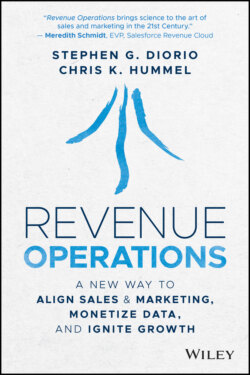Читать книгу Revenue Operations - Stephen Diorio, Chris K. Hummel - Страница 20
The Role of Insight in Value Creation
ОглавлениеInvestments in customer insights and organizational agility do create firm value. How fast and effectively an organization analyzes, leverages, and shares information and customer data can increase tactical marketing returns but also generate long-term enterprise value.63 Academic research has proven there is a significant relationship between how fast your organization shares data and customer insights across revenue teams and share price.8 A comprehensive analysis of 114 academic research studies by the Marketing Science Institute (MSI) has demonstrated that the ability of an organization to generate, disseminate, and respond to market intelligence – called Organizational Knowledge Sharing – has a quantifiable positive effect on firm value and financial performance in terms of profits, sales, and market share.6
Managers need to recognize and prioritize the importance of sharing knowledge across the business. Modern selling systems produce customer data that allows revenue teams to identify trigger events that signal buying intent, flag inquiries from important influencers within accounts, and make decisions about next best actions based on past customer behavior. The window of time an organization has to act on that data is small, however – and is gated by customer time, attention, and expectations for response. This makes hastening data and decisions about an opportunity from the source (e.g. a website, an algorithm in marketing) to a customer-facing employee who can act on it (e.g. a relationship manager or customer service rep) a critical value driver.
Similarly, customer relationships, go-to-market effectiveness, organizational information sharing, customer experience, and the quality of products, people, and innovations have all been empirically proven to drive increases in firm value by academics.6
In particular, the push to focus the organization on customer lifetime value as the primary objective of the revenue team has a financial basis. Customer equity is a significant driver of share price. According to academic research, the value elasticity of customer equity is 0.72.8 This means a 10% increase in the value of customer assets will drive a 7.2% increase in stock price because higher levels of customer satisfaction, trust, and online service innovations enhance long-term margins, sales growth, and enterprise value. Hence, lifetime value is being redefined as an economic model in a digitally driven economy. This is evidenced by the ability of businesses like Airbnb ($125B in firm value with no profits at the time of printing) and the GHX Global Healthcare Exchange to convert digitally enabled consumer and business networks into valuable assets.108,60
For example, Rockbridge pushes its portfolio companies to deploy advanced analytics and direct marketing competencies pioneered by another Rockbridge company, Quicken Loans, to accelerate revenues, profits, and firm value. One Rockbridge portfolio business that provides online postgraduate education, North Central University, was able to borrow demand generation practices developed by Quicken Loans to grow their enrolled student population from 5,000 to 9,000 over their six years of ownership. This led to rapid growth in revenues (from $31M to $114M) and EBITDA (from $6M to $29M) and a highly successful exit.103
